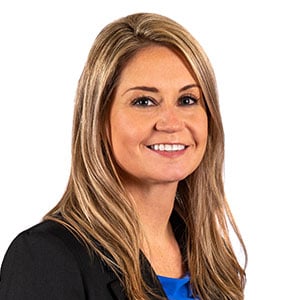Last month at Commonfund Forum 2025, we convened senior leaders of institutionally-related foundations (IRFs) to discuss trends among their institutions and peers uncovered in the FY2024 NACUBO-Commonfund Study of Endowments (NCSE). During the meeting members of the Commonfund OCIO team reviewed key findings in the data from long-term performance, asset allocation, and other metrics specific and unique to IRFs. The presentation then facilitated greater conversation around challenges and shared strategies for navigating the current investment landscape.
Key findings on IRFs from the NCSE data
Asset Allocation
Over the past 10 years, IRF portfolios have seen a shift in asset allocation to a more growth-oriented overall strategy. While IRFs across all size cohorts reduced the allocation to marketable alternative strategies, there was far less uniformity in how those assets were reallocated. The shift in allocation was dependent on the size of the endowment portfolio. Smaller-sized endowments tended to increase their allocation to public equities. In contrast, larger endowments continued to favor private investments, particularly private equity, more than doubling their allocation to that asset class over the past decade.
The observed trend with asset allocation is directly related to how IRFs foresee their own portfolio’s ability to generate the returns necessary to maintain the purchasing power of their portfolio or achieve intergenerational equity. The decision to increase allocations to growth-oriented asset classes may indicate a recognition from IRFs that there is a greater need on their endowment for financial support and stability, but also a greater understanding of the endowment’s ability to take risk to generate the necessary returns.
The chart below compares how each size cohort was allocated 10 years ago with how they are allocated as of this past fiscal year.
Returns
Capital market returns across public and private strategies in recent years have been nothing short of robust. U.S. equity markets posted back-to-back double-digit calendar year returns. This favorable environment, combined with the increased risk taken by IRF endowments (as previously discussed), helped drive attractive total returns over the past decade. However, the investment objective of IRFs extends beyond simply growing the portfolio through strong nominal investment returns. The primary goal is to grow the portfolio's corpus at a rate that exceeds its own spend rate plus inflation.
As shown in the graph below, IRF returns in FY2020 and FY2021 exceeded a traditional return objective of inflation plus a 5 percent spend. This outcome was aided in part by a decade-long period of subdued inflation following the global financial crisis, during which inflation—as measured by the Consumer Price Index (CPI)—consistently remained below its long-term average of 2.5 percent.
This dynamic shifted in FY2022 as inflation surged to levels not seen in decades, peaking at 9.5 percent in the aftermath of the pandemic. Elevated inflation made the return objective of IRFs harder to achieve. As the chart highlights, despite continued solid nominal returns in fiscal years 2022, 2023, and 2024, the 10-year return of IRF endowments has fallen short of their long-term objective of exceeding inflation plus spend.
Administrative Fees
Key to the operational success of an IRF is how they are able to generate revenue through the application of an administrative fee. These fees are typically assessed relative to the size of the IRF portfolio on an annual and ongoing basis. A question in the FY2024 NCSE asked respondents if their institution charges an annual fee to the endowment to cover administrative, fundraising, and other costs. The data show that while almost all IRFs do charge an annual fee, the range of the fee can vary substantially from about 1.0 to 1.5 percent. We get a better look at the data when segmenting responses by size cohort. Smaller IRFs were shown to typically have a higher administrative fee than the larger foundations. In Commonfund’s experience, the unique operating environments and funding sources of each IRF naturally lead to varying fee structures across organizations.
Key Concerns for attendees
After presenting the findings of the study, we turned the meeting over to the attendees who had the opportunity to ask questions, share anecdotes, and provide insights into their institutions and challenges they are facing in their daily operations.
Inflation + HEPI vs. CPI
- We heard from attendees about the challenge of setting a long-term investment objective and while the most widely used formula is spending plus inflation there are many variables and combinations that can make up such a simple equation. We challenged attendees to think about an appropriate inflation metric that better aligns with the cost structure of the institution they support. While many attendees see the benefits of using the Higher Education Price Index (HEPI), which is formulated to track the increase in price of higher education, some saw potential challenges with Board or committee members of replacing an index as familiar as CPI with one less known, like HEPI—an inflation index produced by Commonfund and designed for higher education institutions to track the main cost drivers and funding increases necessary to maintain purchasing power.
- The topic of selecting the right inflation component continues to be one of significant interest and one Commonfund believes can help align the interests of the endowment portfolio with the organization it supports.
Admin Fees
- Within the discussion around administrative fees, another type of fee, a gift fee, was raised. A gift fee is typically a one-time fee that is applied within the first year of an initial gift. The level of the fee is usually higher than the annual administrative fee and data from the study finds they can be as high as five percent. Several institutions in attendance provided insight into their decision to either apply or not apply a gift fee. Some institutions that did not apply an annual fee expressed interest in exploring the possibility of applying a one-time gift fee to generate revenue to support their operations. One institution shared that they charge a one-time, 10 percent fee on non-endowment gifts. There were additional questions and comments about the pros and cons of charging an administrative fee versus a gift fee.
- Commonfund shared insight with the attendees about not focusing on just the fees being applied to the underlying endowments, but how the fees are being utilized and the “yield” the fees are providing to the foundation (through new endowment gifts/contributions).
OTHER CONSIDERATIONS
While we encouraged attendees to use the presentation as a catalyst to start their table talks, we hoped that it served as merely a starting point. Discussions went beyond the data and illuminated other key issues at their institutions.
- The changing student demographics and socio-economic challenges will affect the entire higher education landscape. These challenges are forcing IRFs to evaluate the need for the endowment to support new priorities addressing student food and housing insecurity. Some spoke of using endowed dollars to support college food banks and to provide emergency funds to students to meet their housing needs.
- Turnover at the institution and board level is disruptive for institutions, and it becomes very time-consuming getting new people up to speed on their roles, especially if there is a new person rotating in every couple of years. Institutions are actively seeking feedback from others on strategies to make that process smoother or less disruptive.
- Concerns about rising costs were discussed in detail (related to inflation, discussed earlier in this post). Will more money be needed from the endowment to support operating budgets? How can they maintain their endowment dollars if more is coming out to support general operations? Attendees talked about the importance of raising unrestricted gifts to endowment and the difficulty of doing so.
- Uncertainty of the current policy environment was also something that was looming over the breakfast. There was active discussion of how potential policy changes might impact higher education at all levels.
Our goal for this convening was to provide a platform for these institutions to share ideas and gain new insights into key governance practices that they can implement at their respective organizations. Our hope is that it served as the basis for more informed discussion and debate with their board, committee members and investment managers over the next year.






